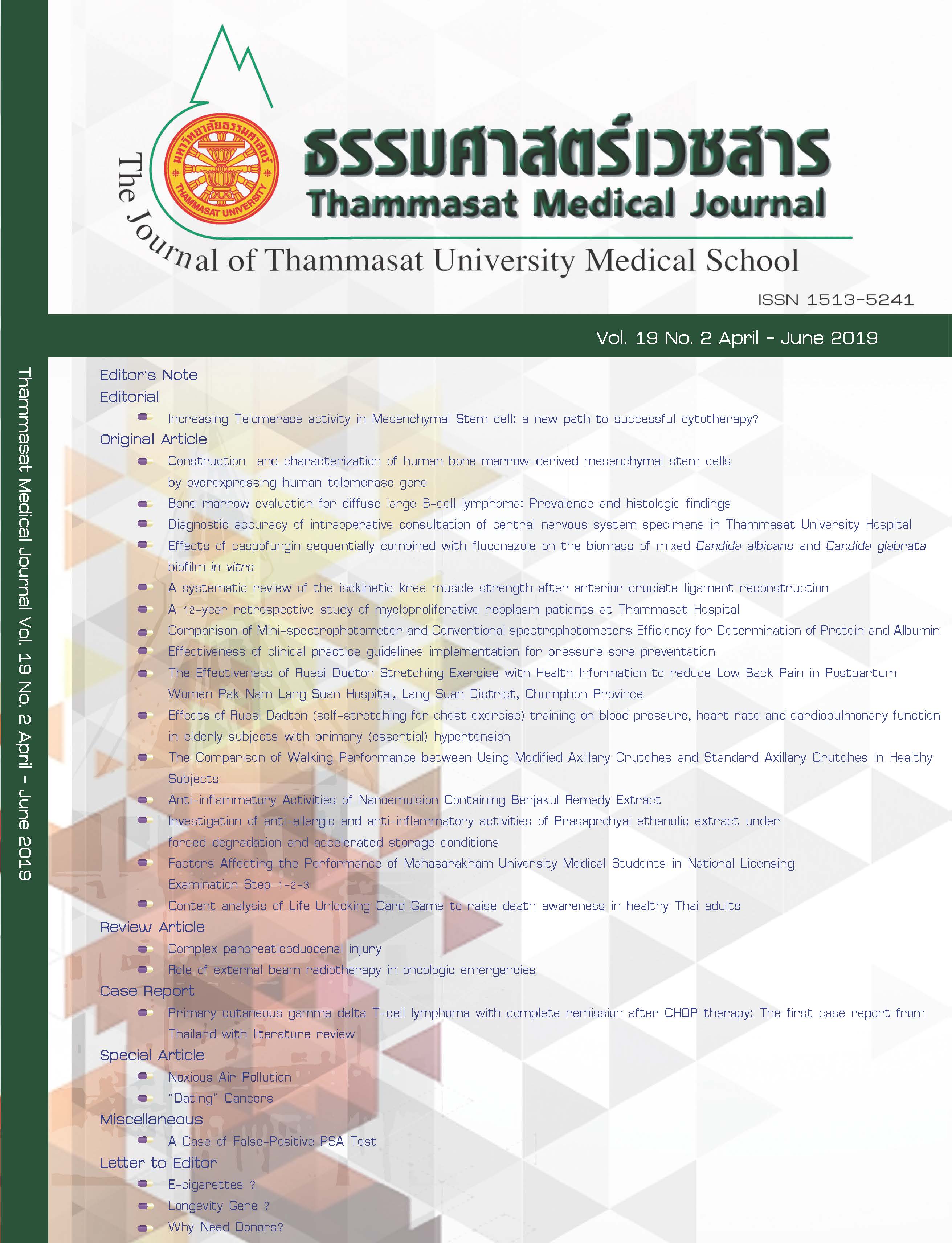Anti-inflammatory Activities of Nanoemulsion Containing Benjakul Remedy Extract
Keywords:
Nanoemulsion, Benjakul extract, Anti-inflammatory activity, Transdermal drug deliveryAbstract
Introduction: Benjakul Remedy is one of traditional Thai medicines listed in the National List of Essential Medicines of Thailand (BE 2561). It consists of five plants and is used for health balance and anti-flatulence. Previous studies showed that an ethanolic extract of Benjakul Remedy (BKE) could relieve pain in osteoarthritis knee patients via oral administration. However, it caused gastrointestinal (GI) side effects. Thus, topical nanoemulsions (NEs) containing BKE were developed for transdermal delivery of BKE to avoid the GI and systemic side effects.
Objective: The objectives of this study were 1) to develop topical nanoemulsions containing BKE (BKE-NEs) and 2) to determine physicochemical properties and anti-inflammatory activities of BKE-NEs
Method: BKE was extracted and investigated its anti-inflammatory activities by determination of inhibitory activity on nitric oxide (NO) release in RAW 264.7 cells. BKE-NEs containing various concentrations of Tween80 and BKE were prepared by using the ultrasonication technique. Physicochemical properties of BKE-NEs, i.e., droplet size, polydispersity index (PDI), zeta potential, drug release, rheology, morphology, anti-inflammatory activities and toxicity to skin cells (HaCaT cells) were also determined.
Results: BKE showed anti-inflammation activities with IC50 of 19.72 ± 0.72 µg/ml. BKE-NEs prepared in this study had droplet size around 25 - 900 nm with PDI of 0.2 - 1.0 and zeta potential of -0.8 to -11 mV. A representative BKE-NE (BKE3-NE-T8-x0.2) containing Tween 80 (8%w/w), BKE (3%w/w) and xanthan gum (0.2%w/w) showed the pseudoplastic flow behavior. The internal phase of BKE3-NE-T8-x0.2 had spherical shape. It could inhibit NO release from the cells with IC50 of 8.36 ± 1.06 µg/ml. This NE was not toxic to skin cells at all tested concentrations.
Conclusion: The optimized BKE-NE had promising physicochemical properties and showed potential for using as topical anti-inflammatory products without skin toxicity. Thus, it could be used for further studies in the animal model.



